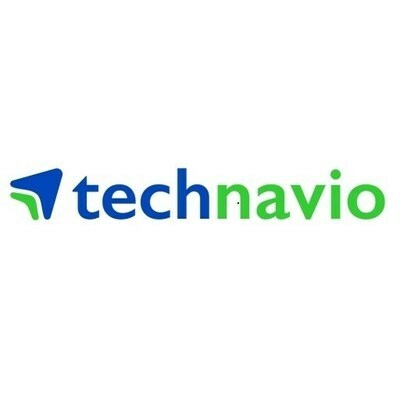NEW YORK, Aug. 15, 2023 /PRNewswire/ — The food enzymes market is estimated to grow by USD 914.04 million from 2022 to 2027, according to Technavio. The market is estimated to grow at a CAGR of 6.28%. The growth momentum will progress during the forecast period. North America held the largest share of the global market in 2022, and the market in the region is estimated to witness an incremental growth of 31%. The US, Canada, and Mexico are the key contributing countries to the market in the region. The region’s high growth is due to a developed food and beverage industry supporting product demand, changing lifestyles, and increasing the disposable income of consumers. Furthermore, the US accounts for most of the total revenue share of the market in this region. Hence, the above-mentioned factors are expected to drive market growth during the forecast period. For more insights on the historic period (2017 to 2021) and forecast market size (2023 to 2027) – Request a sample report
What’s New?
- Special coverage on the Russia–Ukraine war; global inflation; recovery analysis from COVID-19; supply chain disruptions, global trade tensions; and risk of recession
- Global competitiveness and key competitor positions
- Market presence across multiple geographical footprints – Strong/Active/Niche/Trivial – buy the report!
Food Enzymes Market – Segmentation Assessment
Segment Overview
Technavio has segmented the market based on application (processed foods, beverages, animal feed and poultry, dairy, and bakery), Product (carbohydrases, protease, lipase, and others), and Geography (North America, APAC, Europe, South America, and Middle East and Africa)
- The market share growth by the processed foods segment will be significant during the forecast period. Food-grade enzymes are used to break down proteins, carbohydrates, and starches into simpler units by processed foods such as breakfast cereals, canned vegetables, bread, and ready-to-eat foods. Furthermore, the consumption of processed foods is becoming more important due to people’s busy lifestyles and various benefits such as the prevention of cancer, colon disease, and diabetes while replenishing essential lipids, minerals, and vitamins. Hence, these factors are expected to drive segment growth in the market during the forecast period.
Insights on the market contribution of various segments, including country and region wise historic data (2017 to 2021), and forecast market size (2023 to 2027) – Download a Sample Report
Food Enzymes Market – Market Dynamics
Key Drivers
The increasing demand from the beverage industry is a key factor driving market growth. The growth of the market is due to advanced fruit juice processing techniques and the popularity of packaged fruit juices. Furthermore, these enzymes are widely used in the production of alcoholic and non-alcoholic beverages, improving properties such as texture, flavor, and color in beer and wine. Enzymes also have the role of fermentation, digestion, anti-scorching, sweetening, and preservation. Hence, these factors are expected to drive market growth during the forecast period.
Major Trends
Product innovations are a major trend in the food enzymes market. The growing demand for food enzymes from the food and beverage industry has resulted in manufacturers increasing investment in research and development. These efforts are aimed at providing new products, reducing costs, and reducing environmental impact, giving them a competitive edge. For example, DowDuPont developed DuPont Axtra PRO, a protease enzyme for animal feed, and POWERFresh and POWERSoft enzymes for baked goods in Japan. These enzymes use G4 amylase technology, which provides anti-scratch properties and maintains cake freshness throughout the shelf life of baked goods. Hence, product innovations are expected to drive market growth during the forecast period.
Significant Challenges
The availability of substitutes is a significant challenge in the food enzymes market. The main alternatives are emulsifiers such as GMS, DATEM, and CSL/SSL. They have many similarities to food enzymes and are often used in bakery and dairy products to stabilize mixtures of immiscible substances and emulsions. In addition, increased production efficiency, enhanced organoleptic properties, and extended shelf life are some of the benefits offered by emulsifiers. Hence, the availability of substitutes is expected to restrict market growth during the forecast period.
Insights on Market Drivers, trends, & Challenges, historic period(2017 to 2021), and forecast period(2023 to 2027)- Request a sample report!
What are the key data covered in this Food Enzymes Market report?
- CAGR of the market during the forecast period
- Detailed information on factors that will drive the growth of the food enzymes market between 2023 and 2027.
- Precise estimation of the size of the food enzymes market and its contribution to the market with a focus on the parent market
- Accurate predictions about upcoming trends and changes in consumer behavior
- Growth of the food enzymes market across North America, APAC, Europe, South America, and the Middle East and Africa
- A thorough analysis of the market’s competitive landscape and detailed information about companies
- Comprehensive analysis of factors that will challenge the growth of the food enzymes market companies.
Gain instant access to 17,000+ market research reports.
Technavio’s SUBSCRIPTION platform
Related Reports:
The chickpea market is projected to increase by USD 7,401.38 million and the market size is estimated to grow at a CAGR of 5.65% between 2022 and 2027. Furthermore, this report extensively covers market segmentation by distribution channel (offline and online), product (desi chickpea and kabuli chickpea), and geography (APAC, North America, Europe, Middle East and Africa, and South America). The increasing consumption of chickpeas as a snacking item is driving growth in the chickpea market.
The personalized nutrition market is estimated to grow at a CAGR of 10.94% between 2022 and 2027. The market size is forecast to increase by USD 6,474.31 million. report extensively covers market segmentation by product type (active measurement and standard measurement), end-user (direct-to-consumer, wellness and fitness centers, hospitals and clinics, and institutions), and geography (North America, Europe, APAC, South America, and Middle East and Africa). One of the key factors driving the personalized nutrition market growth is the growing adoption of personalized nutrition products among athletes.
|
Food Enzymes Market Scope |
|
|
Report Coverage |
Details |
|
Base year |
2022 |
|
Historic period |
2017-2021 |
|
Forecast period |
2023-2027 |
|
Growth momentum & CAGR |
Accelerate at a CAGR of 6.28% |
|
Market growth 2023-2027 |
USD 914.04 million |
|
Market structure |
Fragmented |
|
YoY growth 2022-2023 (%) |
5.67 |
|
Regional analysis |
North America, APAC, Europe, South America, and Middle East and Africa |
|
Performing market contribution |
North America at 31% |
|
Key countries |
US, China, India, Germany, and UK |
|
Competitive landscape |
Leading Companies, Market Positioning of Companies, Competitive Strategies, and Industry Risks |
|
Key companies profiled |
Advanced Enzyme Technologies Ltd., Amano Enzyme Inc., Associated British Foods Plc, Aum Enzymes, BASF SE, Biocatalysts Ltd., Chr Hansen Holding AS, Deerland Probiotics and Enzymes Inc., DuPont de Nemours Inc., Dyadic International Inc., Jiangsu Boli Bioproducts Co. Ltd., Koninklijke DSM NV, Maps Enzymes Ltd., Nagase and Co. Ltd., Noor Enzymes Pvt. Ltd., Novozymes AS, Puratos Group NV, Specialty Enzymes and Probiotics, Sunson Industry Group Co. Ltd., and VTT Technical Research Centre of Finland Ltd. |
|
Market dynamics |
Parent market analysis, Market growth inducers and obstacles, Fast-growing and slow-growing segment analysis, COVID-19 impact and recovery analysis and future consumer dynamics, and Market condition analysis for the forecast period. |
|
Customization purview |
If our report has not included the data you are looking for, you can reach out to our analysts and get customized segments. |
Table of Contents
1 Executive Summary
2 Market Landscape
3 Market Sizing
4 Historic Market Size
5 Five Forces Analysis
6 Market Segmentation by Application
7 Market Segmentation by Product
8 Customer Landscape
9 Geographic Landscape
10 Drivers, Challenges, and Trends
11 Company Landscape
12 Company Analysis
13 Appendix
About Us
Technavio is a leading global technology research and advisory company. Their research and analysis focus on emerging market trends and provide actionable insights to help businesses identify market opportunities and develop effective strategies to optimize their market positions. With over 500 specialized analysts, Technavio’s report library consists of more than 17,000 reports and counting, covering 800 technologies, spanning 50 countries. Their client base consists of enterprises of all sizes, including more than 100 Fortune 500 companies. This growing client base relies on Technavio’s comprehensive coverage, extensive research, and actionable market insights to identify opportunities in existing and potential markets and assess their competitive positions within changing market scenarios.
Contact
Technavio Research
Jesse Maida
Media & Marketing Executive
US: +1 844 364 1100
UK: +44 203 893 3200
Email: [email protected]
Website: www.technavio.com
![]() View original content to download multimedia:https://www.prnewswire.com/news-releases/the-food-enzymes-market-to-grow-by-usd-914-04-million-from-2022-to-2027-increasing-demand-from-the-beverage-industry-boosts-the-market–technavio-301899892.html
View original content to download multimedia:https://www.prnewswire.com/news-releases/the-food-enzymes-market-to-grow-by-usd-914-04-million-from-2022-to-2027-increasing-demand-from-the-beverage-industry-boosts-the-market–technavio-301899892.html
SOURCE Technavio

Featured image: Megapixl © Paha_l

















